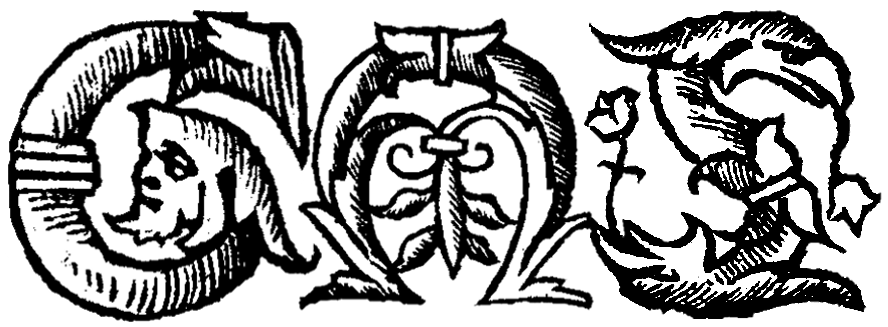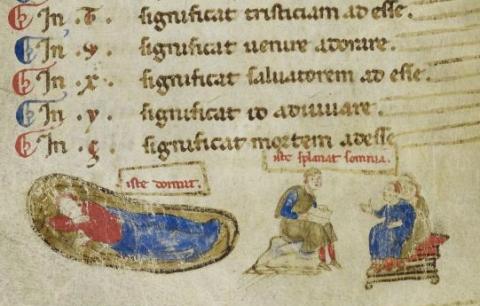On the Explanation of Dreams (Somniale Ioseph) | Ad explanandum sompnium
Introduction to the Text
This short text is one of many so-called “dreambooks” - personal guides to dream interpretation - that flourished across Europe and Byzantium in the late Middle Ages. This particular example is a mantic alphabet known as a Somniale Ioseph, named for Joseph, the Old Testament dream interpreter. Like a similar mantic alphabet contained in the same manuscript and also published in the GMS, it is designed to be used alongside another text. A reader wishing to interpret a dream opens a book, often a psalter or prayer book, at random and stops at the first letter that they see. Turning back to the Somniale Ioseph, then, they read the entry corresponding to that letter.
This text differs from other kinds of alphabetical dreambooks, such as the tradition known as Somniale Danielis, which listed themes and images from dreams alongside interpretations. This text instead introduces a note of chance, drawing on the long history of bibliomancy (fortune-telling with books) in the Middle Ages.
Dream interpretation was a popular pastime in the Middle Ages and hundreds of manuscript copies of dreambooks, drawn from Arabic, Byzantine, Greek, and Hebrew sources, survive alongside those written in Latin and vernacular European languages.
Introduction to the Source
Eighty-eight similar Somniale Ioseph texts survive in manuscript editions, most from the fifteenth century. This particular version was written in the thirteenth century in Venice or the Veneto and is preserved in Berlin in Staatsbibliothek, Preußischer Kulturbesitz, MS Ham. 390 f.49v alongside another mantic alphabet published in the GMS as well as other divinatory and oracular texts.
Below the alphabet on the page an illustrator has included a diagram of how the dreambook functions. A small figure is shown asleep and dreaming (labeled iste dormit) and then is shown sitting awake before a group of friends as he excitedly explains his dream with the help of a book open on his lap (labeled hic splanat somnia).
Further Reading
Chardonnens, László Sándor. “Dream Divination in Manuscripts and Early Printed Books: Patterns of Transmission.” Aspects of Knowledge: Preserving and Reinventing Traditions of Learning in the Middle Ages, edited by Marilina Cesario and Hugh Magennis. Manchester UP, 2018, pp. 23-52.
-
The most recent study of transmission and translation of Somniale Ioseph and Somnia Danielis texts in the West.
Chardonnens, László Sándor. “Handlist of Dream Divination and Lunar Prognostication in Western Manuscripts and Early Printed Books up to 1550,” accessed July 22, 2020, https://www.academia.edu/29720263/Handlist_of_Dream_Divination_and_Lunar_Prognostication_in_Western_Manuscripts_and_Early_Printed_Books_up_to_1550.
-
A continuously updated list of surviving manuscript and print witnesses.
Kruger, Steven F. Dreaming in the Middle Ages. Cambridge UP, 1992.
-
Particularly Chapter 1 - “Dreambooks and the Audiences”
Thorndike, Lynn. A History of Magic and Experimental Science, vol. 2. Macmillan, 1923, pp 290-302.
- The earliest modern survey in English of dreambook texts.
Credits
Transcription by Danny SmithTranslation by Danny SmithEncoded in TEI P5 XML by Danny SmithSuggested citation: Anonymous. "On the Explanation of Dreams (Somniale Ioseph)." Trans. Danny Smith. Global Medieval Sourcebook. http://sourcebook.stanford.edu/text/explanation-dreams-somniale-ioseph. Retrieved on April 24, 2024.

